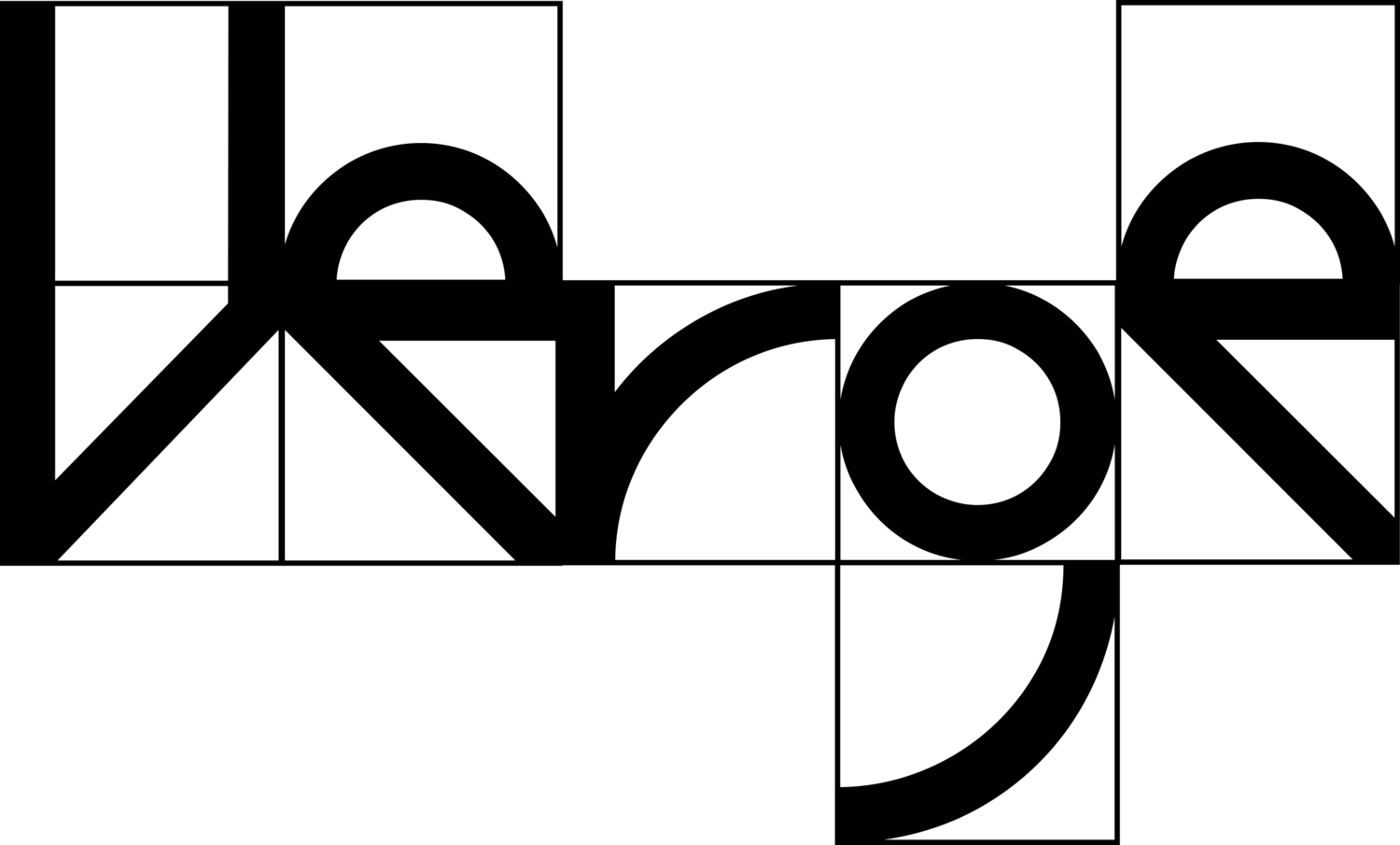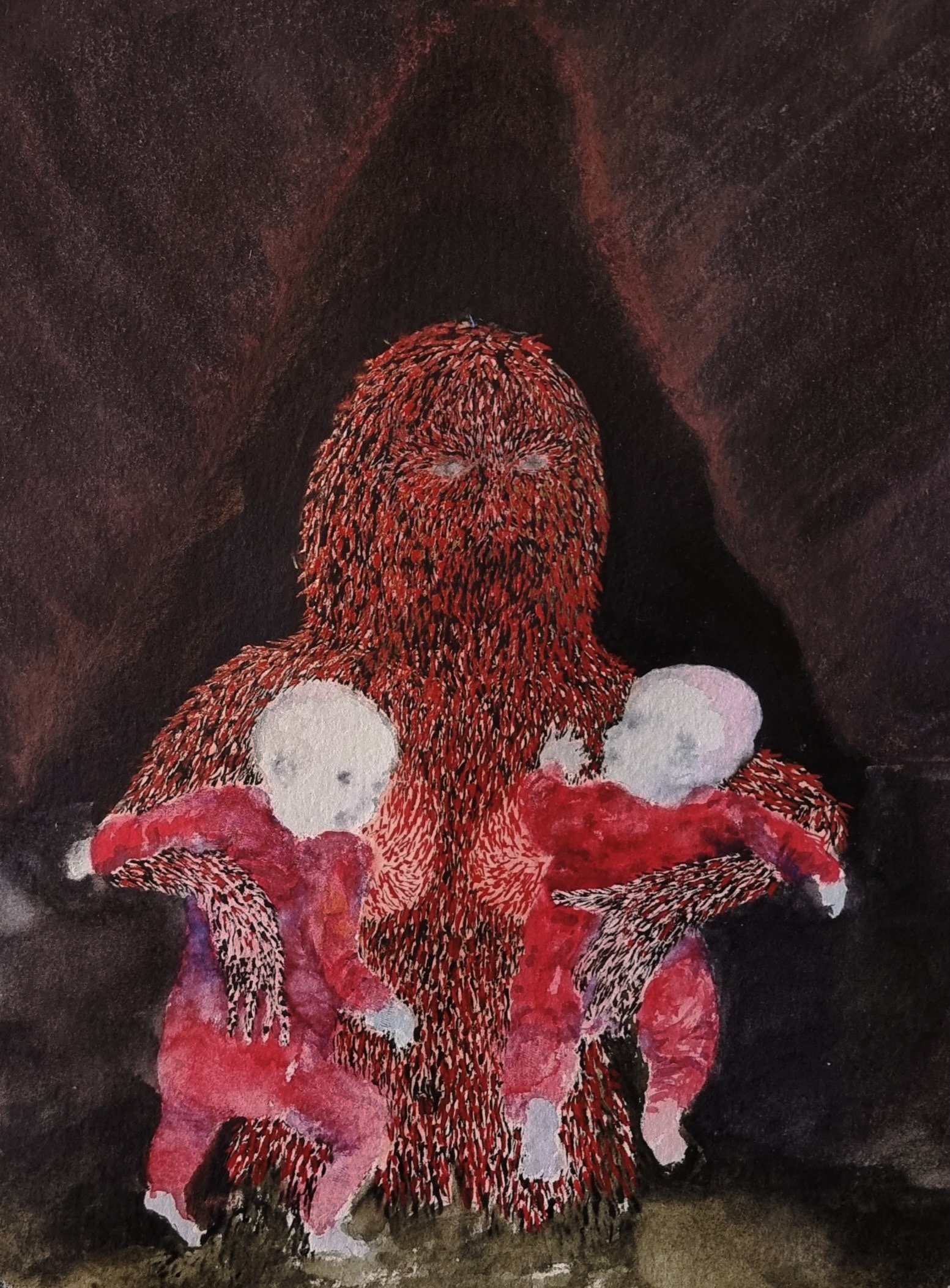MICHELLE GEARIN, SIMONE GRIFFIN, TOM LOVEDAY, CHARLOTTE HAYWOOD, CHANTELLE MITCHELL + JAXON WATERHOUSE AND JACQUIE MENG
’ENTANGLED ME’
20 NOVEMBER – 15 DECEMBER, 2023
OPENING: 23 NOVEMBER 6pm - 8pm
Michelle Gearin, Prism, (detail), 2022, watercolour and oil on mounted Italian cotton paper, dimensions variable. Image courtesy of the artist.
ID: A watercolour painting of a creature with red and black fur holding two human babies.
CURATORIAL STATEMENT
Entangled Me is an exploration of human connectedness with notions and beings beyond.
Looking at modes of coexistence, works within the exhibition consider the wonderment and beauty of interspecies entanglement—the transcendental, spiritual, and sensual, showing identity as fluid over fixed and identity formation occurring not with the individual but within the links in-between beings.
Entangled Me is the second chapter in a series of exhibitions that look critically at human-centric states of play. The first instalment, Horror Is Nothing Other Than Reality, occurred in July 2023.
Michelle Gearin is represented by Michael Reid Sydney + Berlin; Simone Griffin is represented by NASHA Gallery; Jacquie Meng is represented by Stanley Street Gallery; and Tom Loveday is represented by Mais Wright Gallery.
CURATORIAL ESSAY
Entangled Me
Strange and beautiful are the stars tonight
That dance around your head
In your eyes I see that perfect world
I hope that doesn't sound too weird
Blue Rodeo
Lost Together
Entangled Me, 2023. Installation view. Photography by Jessica Maurer.
Lost Together is a song by Blue Rodeo—a Canadian country rock band that hit their peak in the early 90’s. It is a love song about two people connected in an intractable world where destinies are controlled by a few. I thought it apt to preface this essay with this song as its lyrics echo the visual landscape of Entangled Me and serve as an entry point into the overarching theme of the exhibition. The chorus of the song states that if the lovers are lost, they are lost together. Fundamentally, the protagonist proposes that he and his lover are entangled, that is inseparably bound, a unified force in a complex situation that is difficult to escape.
Through a collection of painted, sewn, ephemeral and multi-media works, Entangled Me is an exploration of human connectedness between and beyond us. Narratives throughout the exhibition show humans and nonhumans as intrinsically woven, illustrating the concept of entanglement through the creation of a series of new identities – that is, the posthuman identity. The posthuman identity challenges traditional Western conceptions which are of the view that human beings operate separately from nonhumans as nonhuman identities do not exist as individual beings or things - rather, their existence is dependent upon the relationships between beings/energies. Their identities are assemblages created through a combination of translinear relationships composed of foundational ideas, cultures, biologies, technologies, and abilities.
Entangled Me, 2023. Installation view. Photography by Jessica Maurer.
Through storytelling and relational placement of a range of 'actors' - artists/participants, objects, and languages - Entangled Me attempts to provide a 'democratising' lens through which all life forms can be perceived as equal and connected. In this more egalitarian perception of the human and nonhuman, Western notions that the 'cultured' are superior to 'nature' are diminished. Ecosystems and life forces that we are existentially vulnerable to are foregrounded in works such as Griffin’s triptych Tallowwood Return/NRG/Hearth and Home, and Haywood’s sculptural works Symbiotic Raincoat and Implicit Ecology. These compositions exemplify processes and natural occurrences that humans replicate and appropriate in order to advance themselves—essentially we learn how to be human from the nonhuman [1]. Interstellar return situates the nonhuman perspective of a meteorite in the conversation of the exhibition, a geologic perspective that transcends human frames and Western ideologies of progress, extraction and linear timescales.
Entangled Me, 2023. Installation view. Photography by Jessica Maurer.
Merging myth, the mystical, cultural histories and the everyday, artists in Entangled Me unsettle opinions that identities are fixed by asking us to reassess the characteristics that complete us. Identities that are hybrid/multiple, over essentialized/singular dominate works by Meng and Gearin. The identities in these paintings are beautifully strange, referencing common experiences while creating unique pairings that waiver between the familiar and the uncanny. Loveday’s Colours of the Apocalypse exposes ideologies that influence identity formation. These ideologies, held by a powerful minority, form the cannons that dominate legal frameworks and normalised social constructs coming at great cost to both humans and nonhumans.
I’d like to thank the artists in Entangled Me for allowing me to utilise their projects in an attempt to weave a narrative of entanglement. The strength of the works in the exhibition are their ability to tackle dense and abstract concepts around the posthuman identity in an approachable, eccentric, bewitching way. The show is a reverberation of current realities with a tangible sense of togetherness through an explanation of our symbiotic relationships with the environment, objects, cultural histories and technologies.
Tesha Malott
1. This idea is an extension of Cecilia Vicuña’s argument that we learn how to be human from animals
Works cited/consulted:
Braidotti, Rosi. “A Theoretical Framework for the Critical Posthumanities.”Theory, Culture & Society, vol. 36, no. 6, pp. 31–61, edited by Matthew Fuller and Rosi Braidotti, Sage, 2018 https://doi.org/10.1177/0263276418771486.
Roca, José and Juan Francisco Salazr. Rivus A glossary of water. p.282 Biennale of Sydney Ltd., 2022.




